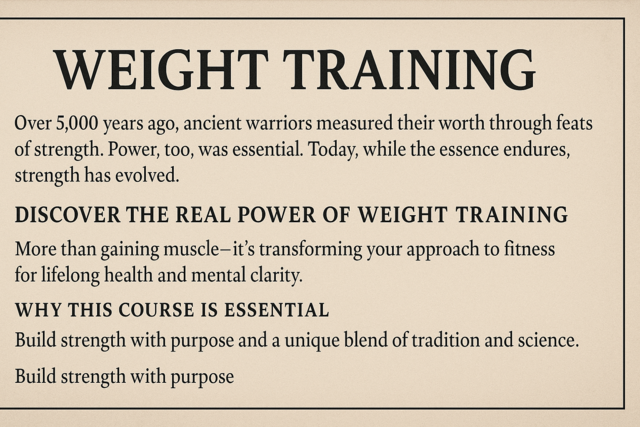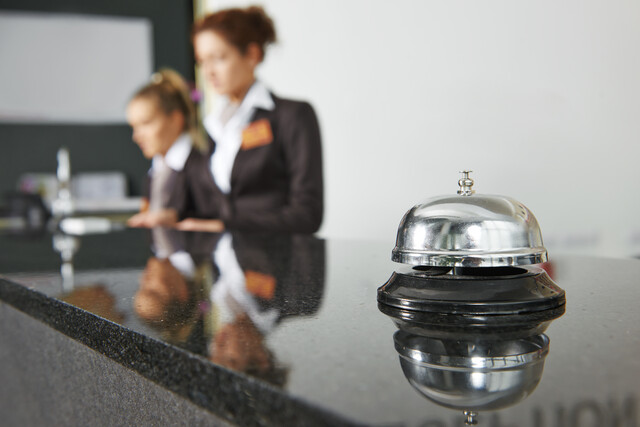Side work duties are time consuming, yet necessary, to the efficient and smooth running of any restaurant. Most people are assigned specific duties, so that no one waitress is responsible for every side duty that is necessary. This kind of work is often done during slack periods, or before or after serving hours.
Condiments � This duty includes taking care of sugar bowls, salt and pepper shakers, syrup jugs, and oil and vinegar containers, mustard and ketchup bottles, etc. These need to be filled, the product inside must be correct (i.e. no salt in the sugar, or the reverse); the outside of the containers must be wiped clean, so there is no sticky, rough, or greasy residue on the outside of the containers. Creamers can be a special case; most of the time, they can only be out on the table for a specific length of time, then the remaining cream must be discarded and the creamer pitcher cleaned well prior to being refilled.
Silverware/napkins � This is an ongoing project. Some restaurants roll the silver in the napkins and have the hostess select as many packets of napkin/silver she needs as she seats each party. Other restaurants have specific napkin folding techniques. Some of the higher end restaurants even have different napkin folding techniques that reflect breakfast, lunch, and dinner.
Flowers � When using fresh flowers, be sure to trim them appropriately, remove any dead or dying blossoms, and dry the outside of the vase prior to placing the vases back on the table.
Service Trays � These must be wiped clean, especially the edges and the bottoms, as they can spoil your uniform or the tablecloth. The top of the tray must be wiped clean so that the bottom of the plates being served are not soiled.
Ice � Must be kept clean. Never use your hands to serve ice; use either a scoop or tongs. If there are foreign objects in the ice, such as lint or crumbs, your customers will be unhappy about the quality of their drinks.
Setting up coffee service includes every part of coffee preparation and serving. The coffee machines, iced tea containers, and serving carafes must be clean. Most restaurants have regular and decaf coffee choices, so be sure you have enough for your shift; and if you pre-fill the filters for quicker changes, be sure to measure accurately, and store properly. Make two pots of regular coffee and one pot of decaf coffee right before you begin service for the meal. Have cut lemons for iced tea, and ensure an adequate stock of creamer, sugar, or sugar alternatives either on the table, or in bowls next to the coffee service. This will save time later.
Bread Baskets:
Slice enough bread for the first seating, but do not put the slices in the basket until just prior to placement on the table. While everyone likes quick service, no one likes stale bread. When preparing the bread baskets, fill according to your establishment's requirements. Some use only sliced bread; others have a bread board, knife, and the patrons cut their own bread; and still others, have a variety of home-baked breads, like corn muffins, beer bread, and bran muffins. Stock the bread baskets accordingly.
Menu Knowledge:
Menu knowledge can make or break your relationship with your customer. Even if you are brand new to the restaurant, your customers still expect you to know more about the menu than they do. Customers will have numerous questions about the menu, and it is up to you to have the answers. Take a copy of your menu home the very first day and memorize it before coming in for your next shift.
Your customers will have questions about the freshness of the produce, where it is grown, whether your mayonnaise is home-made or pre-packaged, whether your salmon is wild or farmed, etc. While it is not possible to anticipate every single question a customer may ask you, there are enough common questions that you can prepare yourself to answer.
Your customers will not appreciate it if you have to run to the kitchen for every question they ask because you do not know the answer. You should never lie if you do not know the answer, either. Sometimes questions are asked because of health reasons, and some health issues can be a matter of life or death. Use your judgment as to when to go and ask a question. If you give inaccurate information and are found out later, you will have just given a very bad impression of you and of your establishment.
In addition to knowing your menu, you must apprise yourself of cooking terms and how they are reflected in your menu. Usually your customer is going to want to know just how a dish is prepared. Everyone has particular tastes, and nothing is worse than expecting a dish to be presented one way, and when it arrives at the table, it is presented in the customer's least favorite way.
Preparation Methods:
By paying attention to the cooking terms and preparation methods of the food that you serve, you will become an expert on your product, and this is what your customer expects. Knowing a little bit about cooking will assist you with this part of your training. Most restaurants do not give this sort of training; it is entirely up to you. My research has indicated that those who go out of their way to learn everything they can about the menu, the cooking terms used, and the actual methods of preparation, find they can expect a significant increase in their tips.
Again, it is up to you to learn the specifics about how a dish is prepared. The reason for this is that your tips will reflect just how well you handle your customers. If you have no idea about the menu, the cooking terms, or the preparation methods, then your patrons will lose faith in you and your abilities and be less than satisfied with your service.
Some establishments actually have training on preparation methods and cooking terms by providing tastings for their employees. When this is offered in your establishment, take advantage of it. Buy some cookbooks. Watch cooking shows. Go to cooking demonstrations. Better yet, befriend the cook or chef and learn directly from the source.
|
� Bake
� Braise
� Broil
� Boil
� Saut�
� Caramelize
� Deglaze
� Flamb�
� Roux
� Temper
� Sear
� Cream
� Dredge
� Fold
� Sweat � Poach
|
In an establishment that has a liquor license, in addition to a wine and beer license, the bottom line is significantly increased from the sale of alcohol. For waiters and waitresses who work in such an establishment, your tip can easily be doubled when your party orders alcohol. In such a restaurant, you will be trained about the protocol for your establishment about alcohol service. The least you will need to know are the signs of intoxication, what your restaurant's sales policies are regarding the sale of alcohol. This includes not selling drinks to minors, and policies that limit the number of drinks you will be allowed to sell to your patrons.
Alcohol Training:
Some states require an alcohol training program, and you will not be allowed to serve or take an order for alcohol until you have received such training. You will also be required to carry a card with you at all times that you are handling alcohol, which proves you have taken the required training and have passed the course.
Alcohol Safety:
You should have a good understanding of how alcohol affects the body. The Blood Alcohol Concentration is an indication of just how much alcohol has entered the individual's bloodstream. Each state has an alcohol concentration level that signifies inebriation. Above that level, the individual should not get behind the wheel of a car.
Ways that you can help a guest from becoming intoxicated are:
- Always check ID to verify legal drinking age.
- Serve only one drink to a customer at a time.
- Try to persuade the guest to order food while drinking.
- Keep track of how many drinks a guest has consumed.
- Know the alcohol concentration of the drinks they are consuming.
- Watch for signs of intoxication.
- Slow down the speed with which you refill drinks if you are concerned.
How to Serve Alcohol:
When your customers first order a drink, usually they would like to get it promptly, and their mood for the rest of their stay will be established at this point. If you are backed up, get the manager or hostess to help with drink service.
Bar Terms:
Alcohol service is divided into two categories, well items and call items. Well items are the house liquors the restaurant uses for most drink orders. They are in a well speed rack in front of the bartender, and are used unless the customer orders a type of liquor by brand. This is a call item. If a customer orders a drink by a brand name, usually this is a more expensive, higher quality liquor; you must comply with the order.
Some of the following are terms you may wish to learn if you intend to do a lot of alcohol service.
- Proof � the measurement of alcohol in a spirit; each degree of proof represents half a percent of alcohol.
- Shot � a unit of liquor ranging from one half an ounce to two ounces. Most restaurants pour 1-1/4- to 1-1/2-ounce shots.
- Straight Up � a cocktail that is served without ice.
- On the Rocks � refers to a cocktail or straight spirits served on ice.
- Twist, Slice, or Wedge � refers to a fruit that garnishes the cocktail. A twist is a lemon peel. A wedge or slice is usually a piece of lime or orange.
- Bitters � a liquid made from roots, berries, herbs that is very bitter.
- Virgin � refers to a drink made without alcohol.
- Back � means the customer wants their drink and a glass of water or a cup of coffee, as well.
- Rimmed � salt or sugar around the rim of the glass.
- Shaken � a cocktail that is placed in a mixing shaker, shaken, then strained into the cocktail glass.
- Stirred � a cocktail that is only stirred in the mixing glass then strained into the serving glass.
Wine and Wine Labels:
Wine used to be only red or white. With the increasing popularity of wine, more and more restaurants are investing in an inventory of wine, so they have a wine list that is brought to the table with their menu. Wine helps to increase the feelings of celebration when dining out, and restaurants can range from a few bottles of house wine, to elaborate cellars and complete wine menus as mentioned.
Anyone serving wine should have some basic knowledge about wine, know the common grape varieties and how people discuss wine. You should be able to discuss the color, the smell (or nose), and taste (or palate).
The very least you should know as a server is whether a type of wine is dry or sweet. But the more you learn about wine and share this with your customers, the more your tips will reflect your knowledge. In most cities, liquor stores and specialty shops have regular wine-tasting opportunities. At the very least, you should avail yourself of these free events and learn what you can about wine-tasting techniques.
Some establishments will even have tastings of the wine that they regularly carry, and will have closed sessions where only the staff is present for a wine tasting lesson. Do not miss these! As a waiter, you rely on the size of your tips. Every waiter and waitress I interviewed who works where wine is served, has affirmed that the more they know about wine, the more easily they can talk about it and share tasting techniques, the larger their tips. The very least you should do is find copies of the Wine Spectator, either at the library, or buy one or two copies at the newsstand and read about the current wine selections.
Another wine knowledge requirement will be when your customers ask for wine pairings with their meals. Some people already have a decision about what they would like, but the ones who do not will ask. These people will fall into two categories.
Serving Wine:
When you do not have a sommelier on staff or working that shift, you will be required to find the appropriate wine in the wine room, take it to the table and begin to serve the wine.
-
Place a napkin behind the bottle.
-
Show the wine label to the individual who placed the order, allowing for plenty of time for examination. If you open a bottle that is incorrect, it may end up coming out of your pay.
-
Your wine opener should be very familiar to you.
-
Use the knife blade portion of the wine opener to remove the capsule and foil.
-
Clean the neck of the bottle with the napkin.
-
Have a firm hold of the bottle, then insert the corkscrew into the center of the cork, stopping about two-thirds of the way into the cork. Going all the way to the end of the cork will usually result in bits of cork floating in the wine.
-
Place the bottle flat on the table and pull straight up, slowly and steadily. You never want to jerk the cork out of the bottle. This can result either in a broken cork or in wine splashed onto to the table, or worse, onto your patron's clothing.
-
After removing the cork, inspect it for dryness and discoloration. You may place it end up on the table or hand it to the host, who will be holding out his or her hand for the cork so that they can inspect it.
-
Once the host is satisfied then pour a small tasting, approximately one ounce, into his glass. Allow him to sniff, taste, and approve the wine prior to serving it to the rest of the party.
-
A customer has the right to refuse a bottle of wine at any point in the wine service, but once the bottle is actually opened, it must be for a reason other than he does not like the taste. Usually a corked bottle of wine will have a cork that shows signs of oxygenation and discoloration. If your customer refuses the bottle of wine, return it to the kitchen and bring it to your manager's attention and allow him or her to handle the situation from there.
-
Once the wine is opened, the wine is first served to the ladies', then the gentlemen, and the host is served last.
-
Generally, you will have four glasses of wine per bottle. Most servers pour a shorter serving that allows a little bit of wine to be left in the bottle. This gives the host the opportunity to finish pouring out the wine later, allowing him a sense of propriety.
While there are specific wine serving techniques, remember to always ask your customer for their specific preferences. Some customers like their red wine chilled; if this is the case, by all means chill it for them. If they wish to have white wine with their steak, or red wine with their chicken, do not make them feel that they have made a bad choice. This happened to us when we were dining in San Francisco for lunch.
"I would like to have your grilled chicken special."
"Would you like wine with that?" asks our waiter.
"I think I would."
"We have several wonderful Chardonnays for you to choose from."
"Actually, I'm rather partial to the Seghesio Zinfandel. May I have a glass of that?"
"Madam." His protest is reflected in his face and his voice. "That is a red wine and you have selected a chicken dish."
The waiter turns to my companion who orders a steak. The waiter looks at him and says, "And, of course, you would like a red wine with that?"
My companion turns on a brilliant smile and says, "And of course, I would like a glass of the Santa Margarita Pinot Grigio. Thank you."
Our waiter remained very displeased with us throughout the meal.
I happen to prefer red wine to white, regardless of my meal choice. My friend preferred the opposite. Our waiter made it very clear that we were horribly gauche and lacked proper wine etiquette. Perhaps he was right in that most people would not have paired the wines we chose with the meals we chose, but that happened to be our taste that day. His tip reflected the disdain he showed to us. Taste is purely subjective. A wise server will allow people their individual tastes.
Glassware:
Glassware for alcohol service is usually specialized and it is important that you understand the shapes of the glassware and its purpose. For beer, there are usually two types of glasses. Pilsner beers are served in the long, tall pilsner glasses. Stout beers are served in thick pint glasses. Other beers may have special glasses for each type of beer. This usually is not your responsibility, it will be your bartender's responsibility. The reason you need to know is that if the bartender makes a mistake, you can usually spot it before you serve the alcohol to your table.
Wine is served in a minimum of three types of glasses. White wine is served in a stemmed goblet that is of a medium-small size. Red wine is served in a stemmed glass that has a larger bowl in order to allow it to continue to breathe after it has been served and for the customer to breathe in the bouquet as they drink. Champagne is served in taller fluted stemmed glasses.
























